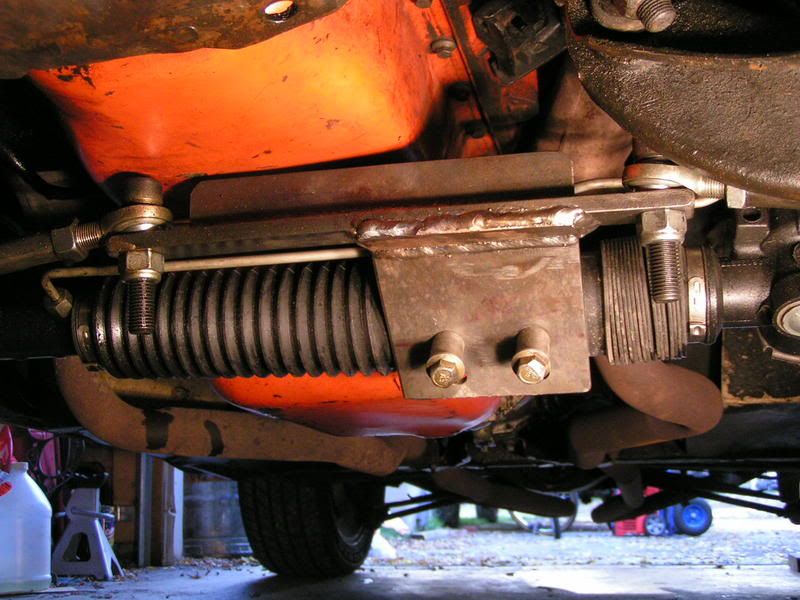Bill,
Since the indoard pivots are obviously going to be outboard of the sheet metal, why not make a "U" shaped jig that will run under the car with each upstand containing a pivot point at the width of the rack?
You may want to make up a dummy tierod also, using a heim joint on the inner end just to make life easier than trying to use the ball and socket that I presume your rack is fitted with. Set the jig up symetricalyy in relation to both side pickup points and move the jig up and down and back forwards until you find the optimum position. Then drill your holes from this info. I think a "U" shaped jig that you can locate from both sides would be easier to set up than a "L" shaped jig which would entail slightly more difficult measuring. I know it means going to the trouble of building a jig, but that's nothing to what you've done on the car so far. Keep up the good work.
Cheers
Edit. Sorry Bill, Just saw your rackends are only 24" apart. I think that will put them inside the pivot points and sheet steel. Really they want to be inline with the inboard pivots as Richard posted earlier. Easy enough to machine up a clevis to screw onto each end of the rack and extend them to the right position and use a heim joint at the pivot. Sorry, gets more involved all the time. Maybe CAD is the way!
Since the indoard pivots are obviously going to be outboard of the sheet metal, why not make a "U" shaped jig that will run under the car with each upstand containing a pivot point at the width of the rack?
You may want to make up a dummy tierod also, using a heim joint on the inner end just to make life easier than trying to use the ball and socket that I presume your rack is fitted with. Set the jig up symetricalyy in relation to both side pickup points and move the jig up and down and back forwards until you find the optimum position. Then drill your holes from this info. I think a "U" shaped jig that you can locate from both sides would be easier to set up than a "L" shaped jig which would entail slightly more difficult measuring. I know it means going to the trouble of building a jig, but that's nothing to what you've done on the car so far. Keep up the good work.
Cheers
Edit. Sorry Bill, Just saw your rackends are only 24" apart. I think that will put them inside the pivot points and sheet steel. Really they want to be inline with the inboard pivots as Richard posted earlier. Easy enough to machine up a clevis to screw onto each end of the rack and extend them to the right position and use a heim joint at the pivot. Sorry, gets more involved all the time. Maybe CAD is the way!
Last edited:






